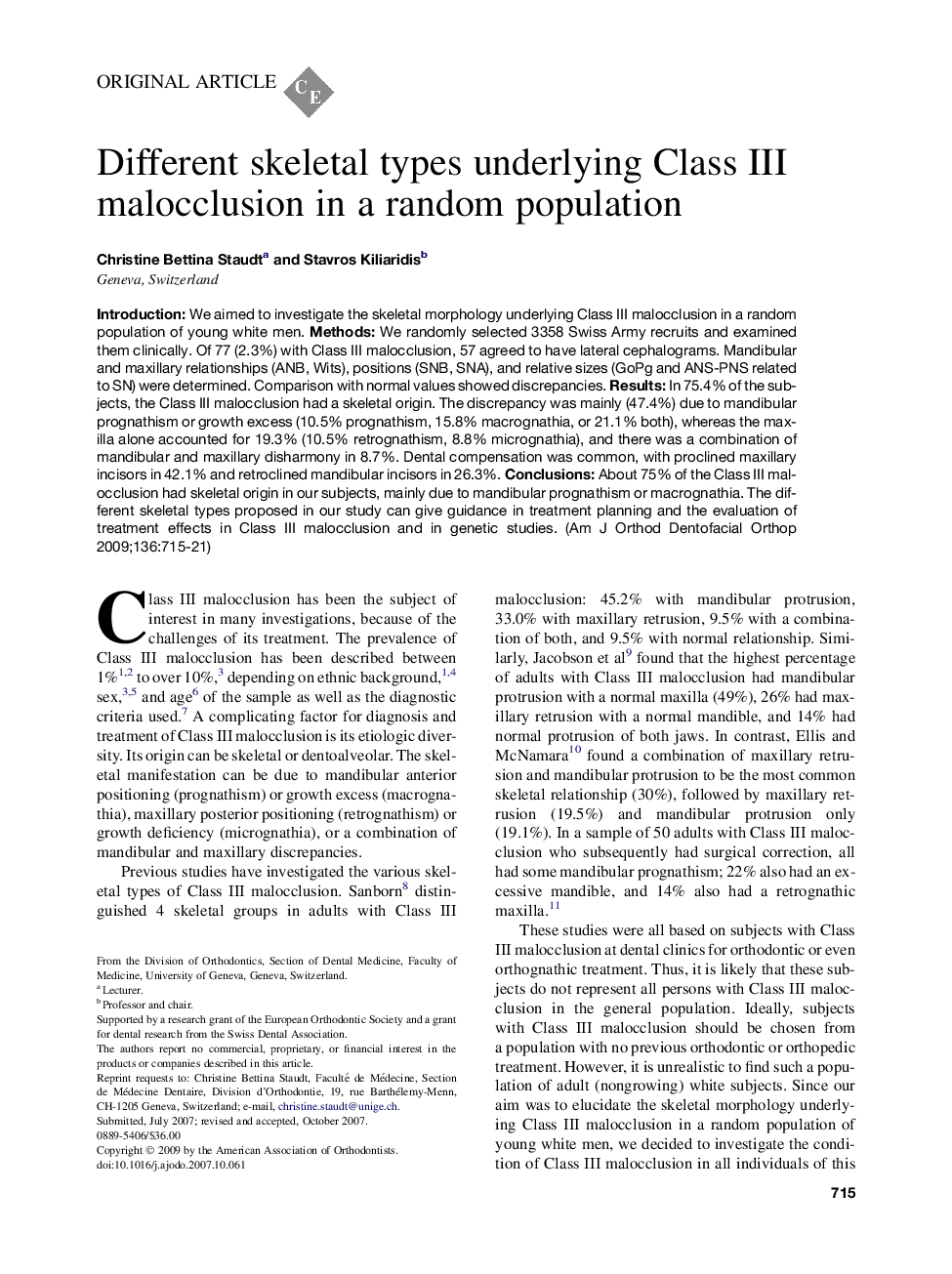| Article ID | Journal | Published Year | Pages | File Type |
|---|---|---|---|---|
| 3118052 | American Journal of Orthodontics and Dentofacial Orthopedics | 2009 | 7 Pages |
IntroductionWe aimed to investigate the skeletal morphology underlying Class III malocclusion in a random population of young white men.MethodsWe randomly selected 3358 Swiss Army recruits and examined them clinically. Of 77 (2.3%) with Class III malocclusion, 57 agreed to have lateral cephalograms. Mandibular and maxillary relationships (ANB, Wits), positions (SNB, SNA), and relative sizes (GoPg and ANS-PNS related to SN) were determined. Comparison with normal values showed discrepancies.ResultsIn 75.4% of the subjects, the Class III malocclusion had a skeletal origin. The discrepancy was mainly (47.4%) due to mandibular prognathism or growth excess (10.5% prognathism, 15.8% macrognathia, or 21.1% both), whereas the maxilla alone accounted for 19.3% (10.5% retrognathism, 8.8% micrognathia), and there was a combination of mandibular and maxillary disharmony in 8.7%. Dental compensation was common, with proclined maxillary incisors in 42.1% and retroclined mandibular incisors in 26.3%.ConclusionsAbout 75% of the Class III malocclusion had skeletal origin in our subjects, mainly due to mandibular prognathism or macrognathia. The different skeletal types proposed in our study can give guidance in treatment planning and the evaluation of treatment effects in Class III malocclusion and in genetic studies.
